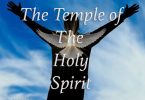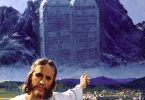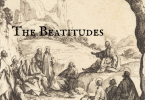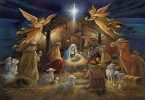The Solemnity of Assumption of Mary (15th August)
Scripture: Rev. 11:19a; 12:1-6a; 1 Cor. 15:20-27; Lk. 1:39-56
Today, we are celebrating the solemnity of the Assumption of Mary; this dogma was pronounced by the Catholic Church in 1950 by Pope Pius XII. He declared it with these words, “We pronounce, declare and define it to be a divinely revealed dogma: that the Immaculate Mother of God, the ever Virgin Mary having completed the course of her earthly life, was assumed body and soul to heavenly glory.” Does it mean to say the dogma is an invention of human beings? Sacred scriptures and tradition show us that the belief in the Assumption of Mary has a long history.
The earliest references to the Assumption of the Blessed Virgin Mary appear in the second and the third century in the apocryphal writing entitled Transitus Mariae. Some of the Church Fathers believed that Mary was taken up into heaven when she was alive while others believed that she was already dead. St John of Damascus writes the legend about the Emperor and his wife who were searching for Mary’s body but they could not find it. In 556 AD, the patriarch of Alexandria, Theodosius attests to the two popular Marian feasts in Egypt: Mary’s death on 6th January and Assumption on 9th August. He understood that Mary was assumed 206 days after her death. In 600 AD, the emperor Mauricius decreed that the Assumption was to be celebrated on 15th August. Soon the practice spread throughout the Churches in Rome.
Our historical overview tells us that there has been uninterrupted tradition about the celebration of the Assumption of Mary. The Eastern churches carried the belief from the first century in the Assumption of Mary. The ancient tradition says that Mary was laid to rest at the foot of Mt. Olives but nobody could find relics of her as we have of the apostles. This is acceptable negative evidence of Mary’s Assumption. The early Church Fathers such as St. Gregory and St. John Damascene held the belief in the Assumption of Mary. The tradition reveals to us the firm belief in the Assumption of Mary among the early centuries. It is the strong basis of the doctrine of the Assumption of Mary. What about the scriptures?
Many criticize Catholics for their belief in the Assumption of Mary. Since it is not mentioned directly in the Holy Scriptures, they do not believe in it. But our careful examination will tell us that scriptures also attest to Mary’s Assumption. There are two cases of Assumption mentioned in the Old Testament; Enoch (Gen. 5:24) and Elijah (2 Kgs 2:1). The New Testament is silent on the matter but today’s liturgy indirectly explains to us the presence of Mary in heaven and her bodily Assumption.
In the first reading from the Book of Revelation, St. John gives us a vision of a woman who is about to give birth. She is a symbol of Israel or the church. The child is the messiah or the Christ. The dragon is the evil that resists Christ, the universal truth. I was wondering what link this reading would have with today’s theme. Is it only taken for a reference to a woman? Does St. John refer to her as Mary or someone else? A little homework solved my query. St. John shares his earlier vision in the previous verses. He sees an Ark of the Covenant which was missing in heaven. It is interesting to note, St. John switches over from the image of the Ark of the Covenant to the woman in heaven. He draws clear parallelism between the two images. He tells us that Mary is the new Ark of the Covenant. If Mary’s body was the dwelling place of God, then she is the Ark of the Covenant because Jesus is the new covenant of God. It is but obvious at the end of life, the body, the sacred Ark would return to the rightful place in heaven.
In the second reading, St. Paul defends the resurrection of the dead. He argues if sin came from one man then life has come from another. He refers to the first Adam and Christ as the new Adam. If Christ as the new Adam has tested the first fruit of resurrection of the dead, then Mary who is the new Eve will also test the fruit of resurrection i.e. Assumption. It is said that her body and soul remained incorrupt and was assumed in heaven. It is not only a privilege to Mary because she was the mother of God but for all ordinary human beings.
In the Gospel, Mary sings the Magnificat in which she accepts that the Almighty God has done great things for her. One of the expressions of praises in the Magnificat, Mary says, God has pulled down the princes and lifted up the lowly. God besides making her mother of God, has blessed her with the gift of bodily assumption. Meditation on the readings of today’s liturgy helps us to reflect on Mary’s place in heaven who has played a significant role in the salvation of mankind. Therefore, St. John Paul II says, from the miraculous conception, participation in the son’s mission, special association with the redemptive sacrifice, she cannot fail to acquire a continuation after death. She is perfectly united with the life and saving work of Jesus. There are thus, passages in Scriptures that resonate with the Assumption, even though they do not spell it out”. (quote is adapted).
The traditional overview and the scriptural meditation help us to realize the belief in the Assumption of Mary is one of the most important beliefs of our Catholic faith. It is rooted in the core belief of the resurrection of the dead. Mary’s assumption in heaven gives us the assurance and hope of our resurrection. It gives us the assurance of our entry into heaven. It is a sign to us that through God’s grace and faithfulness to God’s will, we can enter into heaven. Mother Mary is definitely enjoying her rightful place in heaven. If we want to be in heaven, then we must follow Mother Mary’s example in our lives.
today, we also celebrate the 75th Independence Day of our country. Let us pray for our nation. Let us pray for our political leaders. May we experience real independence while living in our own country where justice, peace and harmony reign.






